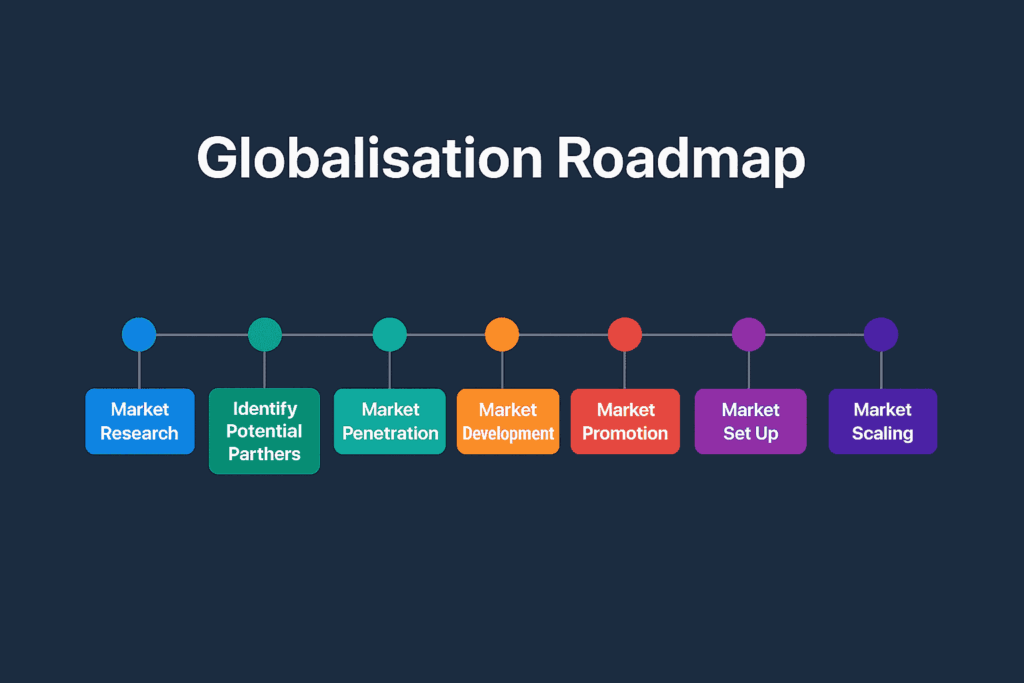In the dynamic realm of business, the pursuit of growth often leads companies to explore new horizons. Whether it’s tapping into overseas markets or enhancing domestic operations, having the right strategies and resources is paramount. Two crucial elements that can significantly propel a business forward are the Market Readiness Assistance Grant (MRA) grant or MRA Grant, and a well – crafted approach to business matching, internationalisation, and market penetration. Engineering overseas expansion success, Finnex templated a “Globalisation Roadmap” that SMEs can navigate in order to minimise failures and ensure greater success with its Market Readiness Consultation.

Internationalisation and globalisation are not just buzzwords; they represent the new normal for businesses. Internationalisation is the strategic process by which a company adapts its operations to enter and succeed in international markets. It involves everything from adjusting business models to suit local conditions to building a global brand.
The MRA Grant is a game-changer for businesses aiming to expand. Offered by many governments, it serves as a financial lifeline for a variety of market-entry activities. Market research, for instance, is a cornerstone of any expansion plan. With the MRA grant, companies can afford in – depth studies of overseas markets. This could involve analyzing consumer trends, understanding regulatory landscapes, and sizing up the competition.
Let’s take the example of a local artisanal food producer. Through MRA grant funded market research, they might discover that there’s a burgeoning demand for their products in a neighboring country. They can then use the grant to adapt their packaging to meet local aesthetic preferences and comply with food labeling regulations. This targeted use of the MRA grant not only mitigates risks but also maximizes the potential for success in the new market.
Business matching is like the connective tissue that binds businesses to opportunities. It’s about forging partnerships with the right clients, investors, and other businesses. Imagine a tech startup that has developed an innovative software solution. Through business matching initiatives, they could be paired with an established industry player looking to enhance its digital capabilities. This partnership could open doors to new markets, provide access to additional resources, and accelerate the startup’s growth trajectory.
When it comes to overseas expansion, market setup is a critical step. This involves establishing a legal presence, setting up physical or virtual offices, and building a local team. A well-planned market setup can help a business integrate into the local business ecosystem. For example, a manufacturing company setting up in a foreign country might choose to partner with local suppliers for raw materials. This not only supports the local economy but also ensures a steady supply chain.

Consultant Login: Click Here
Copyright © 2022 Finnex Pte Ltd | Finnex Management Consulting Pte Ltd | Privacy Policy